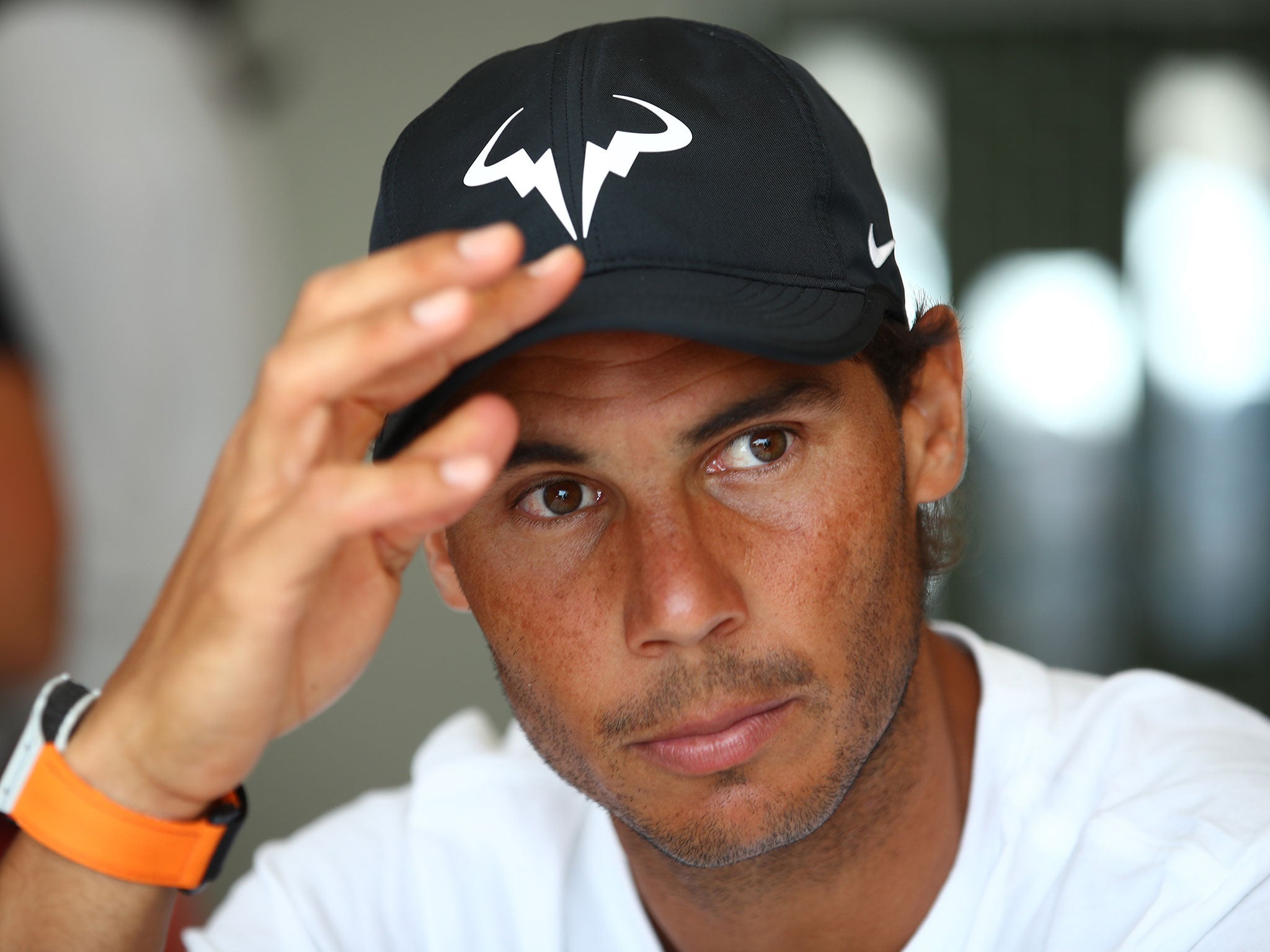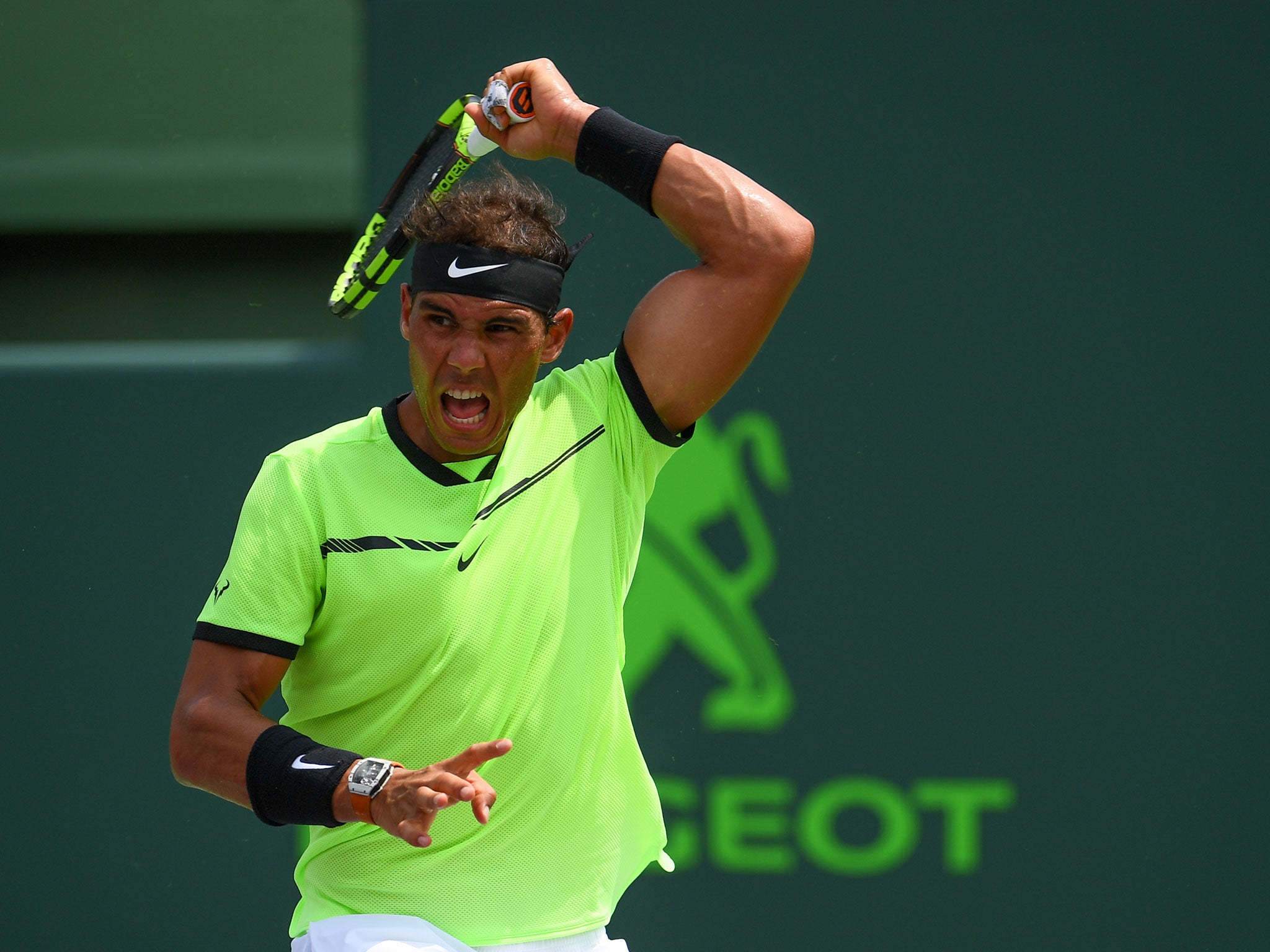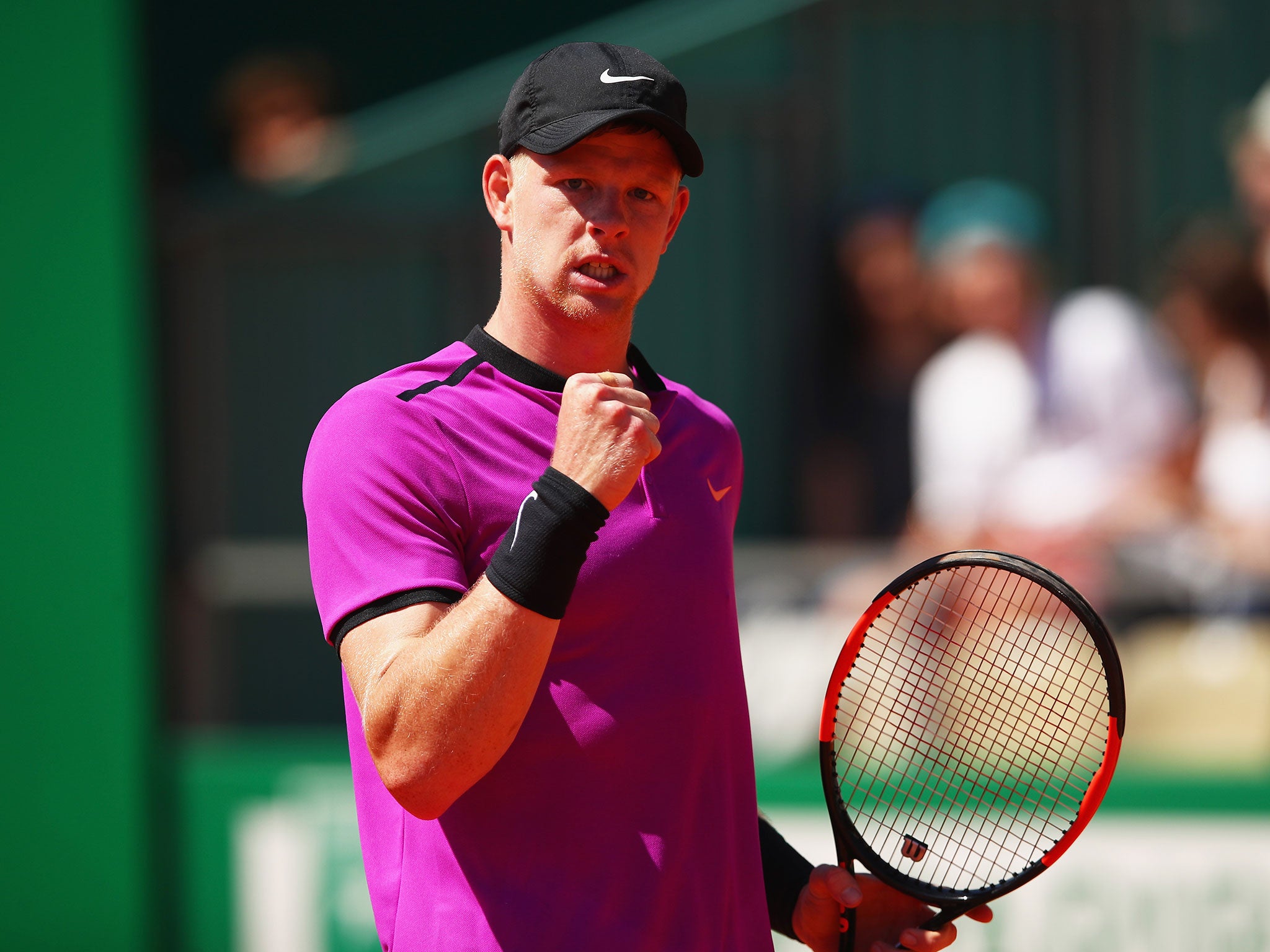Rafa Nadal more concerned by his knees than wrist injury recurrence as he adjusts to resume clay court dominance
The nine-time French Open champion begins his clay court season in Monaco, but even he needs to take precautions in order to adjust to the rigours of the surface

Your support helps us to tell the story
From reproductive rights to climate change to Big Tech, The Independent is on the ground when the story is developing. Whether it's investigating the financials of Elon Musk's pro-Trump PAC or producing our latest documentary, 'The A Word', which shines a light on the American women fighting for reproductive rights, we know how important it is to parse out the facts from the messaging.
At such a critical moment in US history, we need reporters on the ground. Your donation allows us to keep sending journalists to speak to both sides of the story.
The Independent is trusted by Americans across the entire political spectrum. And unlike many other quality news outlets, we choose not to lock Americans out of our reporting and analysis with paywalls. We believe quality journalism should be available to everyone, paid for by those who can afford it.
Your support makes all the difference.Rafael Nadal and clay-court tennis might seem as natural a fit as Monte Carlo and millionaires, but as the Spaniard prepares to play his first match of the season on his favourite surface he insists that switching to terre battue is as big a challenge for him as it is for anyone else.
“I need time, I need hours on court,” Nadal said here at the Monte Carlo Masters, the traditional start to the European clay-court season, ahead of his opening match on Wednesday against Britain’s Kyle Edmund. “I need to remember how to win points, how to defend, how to move, which balls I can go for and which I cannot. It is a process and it is not automatic.
“Even if you might think it is natural for me because I have had a lot of success on this surface, things are not that easy, especially when you have not played on this surface for nearly a year. It takes time to adjust your game, to play differently to the way you play on other surfaces.
“This year I decided not to play on clay in February, so it’s a little bit different. I need time. I am spending as much time as possible on court and I’m trying to watch some videos so that I can remember things.”
He added: “I’ve had the chance to adapt my game and my body to the clay, step by step. I started slowly, practising just for 45 minutes, one hour, one hour and 30 minutes the first few days. I need to do that to try avoid another wrist injury. You can get an injury if you don't control that. Taking a few more days helps.”
Last year a second wrist injury in three seasons ruined Nadal’s hopes of crowning a fine clay-court campaign with a tenth triumph at the French Open, where he had to pull out after the second round.
Nadal, who has also had serious knee problems in his career, said he no longer had any problems with the wrist injury, which forced him to cut short his 2016 season.
“I am much more worried about my knees than about my wrist,” he said. “I believe the knees are more dangerous for me than the wrist. The wrist injury was an accident.
“I have had two problems in the wrist – 2014 and then last year – and both times it was down to a bad movement. It was not something that was going on and getting worse and worse. It wasn’t the same sort of injury as the knees.”

Nadal, who has not won a Grand Slam tournament since the 2014 French Open, describes Monte Carlo – where he has won the title nine times - as one of his favourite tournaments of the year. His confidence has been bolstered by reaching the finals of three tournaments so far in 2017, in Melbourne, Acapulco and Miami.
The world No 7 said the key to his good start was the fact that he was enjoying his tennis. “When I don’t have injuries and I feel I am competitive in the events that I am playing, that makes me enjoy it and makes me happy - more than winning titles.
“It’s important to me to feel competitive enough to have the chance to compete for the things that really motivate me. I had that feeling in the first part of the season and I am working to have that feeling in the next couple of months.”
Toni Nadal, his uncle, and Francisco Roig, a long-time member of his coaching team, continue to work with Nadal, who has also been lifted by the recruitment to his entourage of Carlos Moya, a fellow Majorcan and former world No 1.

“It’s a great combination,” Nadal said. “Carlos came in with ideas to play a bit more aggressively and to work on the practices in a little bit of a different way and we are doing that well. Toni knows me very well on clay. Carlos obviously knows me very well too, but I think Toni has more experience about what I need to do to play well here.
“Next week in Barcelona it will be Toni and Francis. It’s a good combination. Everybody is working well and the most important thing is that I am happy with how things are going.”
Edmund earned the chance of a first meeting with Nadal by beating Dan Evans, who is ranked one place higher than his fellow Briton at No 44 in the world rankings. Edmund, who is much more comfortable on clay than his Davis Cup colleague, dropped his first three service games to trail 4-1 but then took charge, winning 7-5, 6-1 in just an hour and 20 minutes.
“It’s a good opportunity for me,” Edmund said of the chance to play Nadal. “I’ve never played Rafa. This is such a successful tournament for him. He’s won it nine times and he obviously loves playing here.
“I’ve played Novak [Djokovic] three times, Andy [Murray] twice, [Stan] Wawrinka, [Milos] Raonic. It’s another top 10 opportunity for me. I like the clay and I’ve been getting better on it over the last few days.”

Twelve months ago Djokovic was the defending champion here but was beaten first time out by Jiri Vesely, the world No 55. Edmund agreed that it could be to his advantage to meet this year’s defending champion in his first match of the clay-court season.
Evans, who described playing on clay as “a pointless exercise” given that it does not suit his game, was asked what he felt about the missed opportunity to play Nadal. “Obviously it would have been great to play him,” Evans said. “I would have been struggling for some games, I know that. I guess I saved myself some embarrassment.”
Join our commenting forum
Join thought-provoking conversations, follow other Independent readers and see their replies
Comments